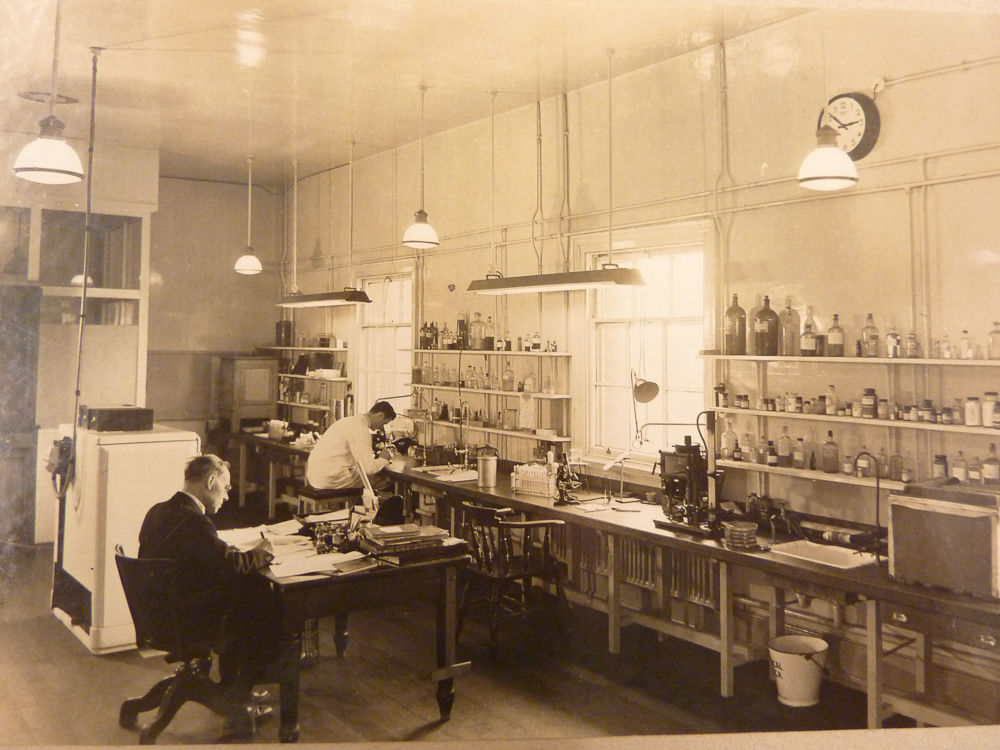
The Burns Unit, Glasgow, 1942-1943
‘The outstanding impression - has been the rarity of acute septic infection’
Leonard Colebrook, bacteriologist, 1945.
 Wellcome Collection. Attribution 4.0 International (CC BY 4.0)
Wellcome Collection. Attribution 4.0 International (CC BY 4.0)
Burns wards had existed at Glasgow Royal Infirmary since the 1870s, but in the 1930s, the hospital pioneered a specialist surgical unit for burns. However, even patients with small burns died, and unsuccessful skin grafts delayed patient recovery. During the Second World War Britain’s Medical Research Council (MRC) brought together a scientific unit under the bacteriologist Leonard Colebrook to improve both treatment and recovery.
Glasgow’s burns team included clinical lead Alfred Clarke and a young surgeon, Tom Gibson. In the 1940s, the unit treated around 1,000 burn and scald patients annually, with around 200 admitted and infections the leading cause of death. Colebrook (pictured below) therefore concentrated on preventing ‘cross infection’ by disinfecting bed clothes and dressings, developing ‘Glasgow No. 9’ antibiotic cream, and even stopping a surgeon from whistling!
Mortality rates dropped rapidly, with infections falling from 80% to 30%, as did mortality. Skin grafting improved, but Colebrook wanted to secure better outcomes. Immunologist Peter Medawar briefly joined the unit and published a paper with Tom Gibson, in which they explained how the human body rejects foreign tissue, thereby paving the way for transplantation surgery. When the MRC Unit moved to Birmingham with Colebrook in 1944, burns at Glasgow Infirmary returned to general surgical wards.
Surgeon Joseph Lister (1827–1912) transformed surgery with his development of antiseptic treatment, which introduced cleanliness to stem infection. Working at Glasgow Royal Infirmary, Lister used bandages soaked in carbolic acid to keep wounds clean. Staff in the burn wards used carbolic acid until the 1880s, when it was gradually discredited.
Wellcome Collection. Attribution 4.0 International (CC BY 4.0)
1930s research by doctor John Dunbar into burns treated at Glasgow Infirmary between 1833-1933, identified a progressive rise in scalds, which, together with burns, already outnumbered all other accidents treated there in the 1840s. This rise was due to the lighter weight of modern pans and kettles and the growing popularity of tea among working families.
Glasgow, Royal Infirmary Medical Block [05.03.2017], b16aug, CCBY-NC 2.0
Dunbar found that the clothing worn at the time of a burn determined the severity of injuries. In the 19th century, Scottish women wore fire-resistant skirts and underwear, but by the 20th century, they wore cottons and synthetics, which caught light more easily. Only in the 1950s, did Colebrook begin campaigning for manufacturers to use safer materials.
© University Hospitals Birmingham